In this article, we discuss how we expose for a white wedding dress to keep its details and minimize or prevent color shifts. All photos were taken with a Canon 6D in RAW using a Canon 70–200 f/2.8L IS at f/22 on a tripod. Direct sunlight during the morning golden hour with no clouds was the light source. The images were uploaded to Lightroom and the only processing completed was resizing the images to 570 x 700 pixels. The photos were exported in JPG format at 100 percent quality at 75 resolution, after which some photos were opened in Photoshop to place a red X to mark the area on the dress that was spot metered.
Wedding photography is a particularly challenging profession for various reasons. First, it is a combination of various genres: portraiture, commercial, architecture, still life, macro, children and family photography, and sports if considering action shots during receptions. Wedding photographers are also confronted with numerous and fluid lighting conditions, backgrounds and scenes, skin colors, and weather conditions, among others.
A further complication for many novice and amateur wedding photographers, as well some professional photographers, is properly exposing a white wedding dress to preserve its details and color. This can make or break wedding photos.
A bride’s wedding dress is extremely important and meaningful to her, not just symbolically, but also emotionally. Finding the right wedding dress can be a long process filled with many months of searching, trying on one after another until she finds “her” wedding dress she will wear on one of the most important days of her life. There is also the matter of cost, which further increases the value and importance of a wedding dress. From the bride’s perspective, it would be more than disappointing to have spent countless hours finding “the” dress and invested so much emotion and money only to have wedding photos in which her dress lacks all detail.
Overexposure: The Nemesis of White Wedding Dresses
Exposure refers to how light or dark a photo is. When there is too much light, a photo is considered overexposed, whereas when there is too little light, it is considered underexposed. Overexposure leads to a loss in the details of whites and highlights. The more a photo is overexposed, the more these details are lost and become unrecoverable in post processing.
This image is overexposed by +1.3 stops, and the details in the wedding dress are evident.
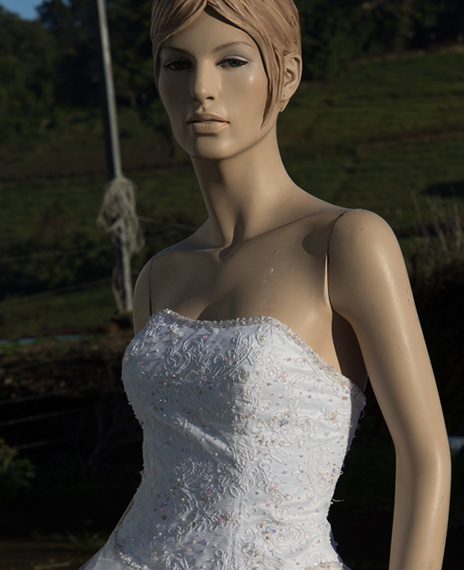
+1.3 stops
This picture is overexposed by +3 stops and the highlight details are degraded and mostly unrecoverable.
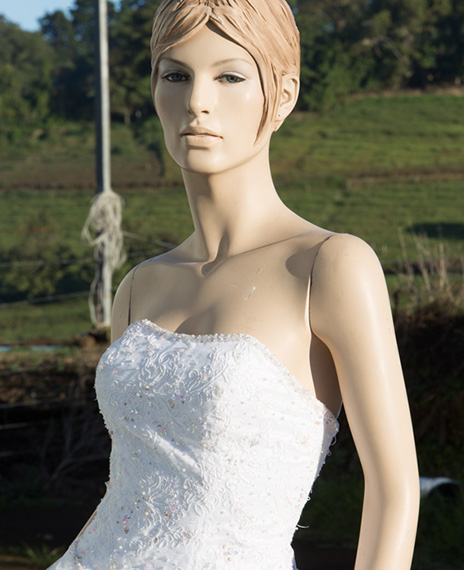
+3 stops
DSLRS: Knowing Their Limitations
Digital Single-Lens Reflex (DSLR) cameras have two limitations that can make photographing white wedding dresses problematic.
1. Recovery of Highlights vs. Recovery of Shadows
Professional-grade DSLRs are better at recovering details in shadows when underexposed than recovering details in whites and highlights when overexposed. For example, the shadows of a photo underexposed by three stops can be easily recovered with the introduction of some noise, which is easily remedied in post processing. The details in the highlights or whites of a photo overexposed by three stops, however, are usually not recoverable, and if they are recoverable, this area of the image is highly degraded.
2. DSLRs: Rendering of Tones to 50 Percent Grey
DSLRs render tones in an image to 50 percent grey—or middle grey. When metering the light reflected from a white wedding dress with a DSLR and adjusting the aperture, shutter speed, or ISO until the exposure meter reads 0—which the DSLR considers a correct exposure—the tones in the image are rendered as 50 percent grey. This causes white wedding dresses to appear greyish and not white.
The following is an image of a grey scale—a range of greys, from black to white, organized into 10 zones. Each zone represents one stop of light. The number line above it ranging from -3 to +3 represents the exposure compensation points of a DSLR, which are aligned with their corresponding grey scale zone. Each number represents one stop of light, with zero, or 50 percent grey, being a correct exposure as per the DSLR light metering system. Negative numbers represent underexposure; positive numbers overexposure.
A typical white wedding dress corresponds to Zone VII. Metering the brightest part of the white dress and adjusting the camera settings to reach zero exposure compensation consequently relocates the dress from Zone VII to between Zone IV – V, causing the dress to appear greyish, not white.
The brightest area of the dress in this photo is at zero exposure compensation—a correct exposure according to DSLRs.
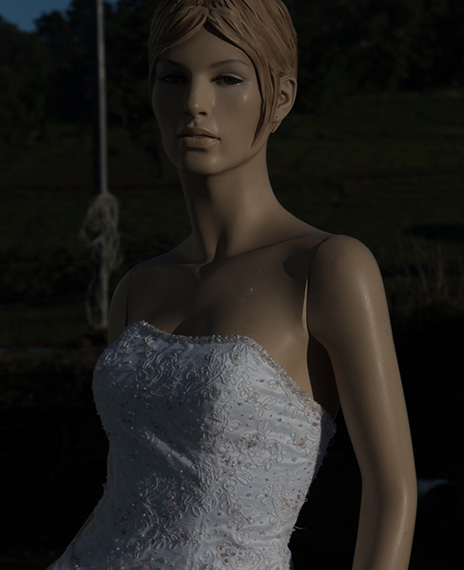
0 exposure compensation
The brightest area of the dress in this photo is at +1.3 exposure compensation.
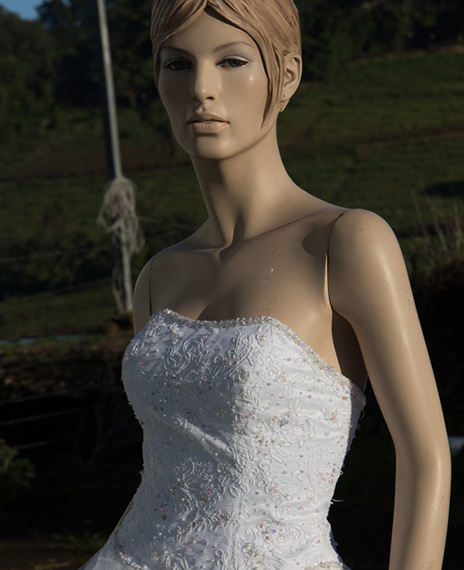
+1.3
The following photos were taken at each point on the exposure compensation line from -3 to +3 by metering the brightest area of the dress (marked with a red X) to demonstrate when irrecoverable loss of details begins to occur and the color shifts from exposure to exposure.
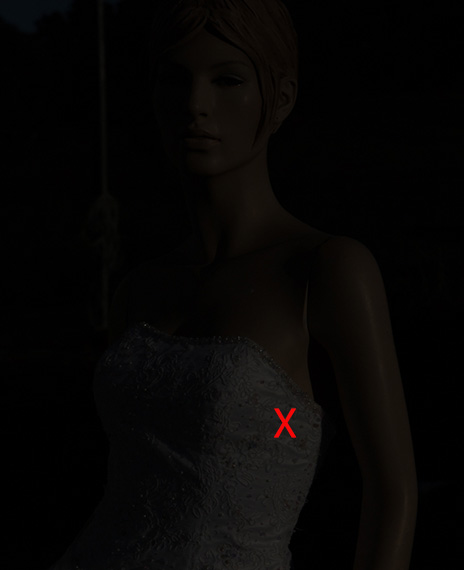
-3
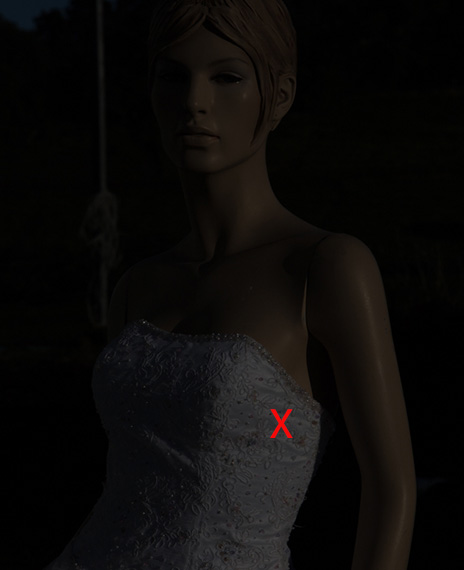
-2
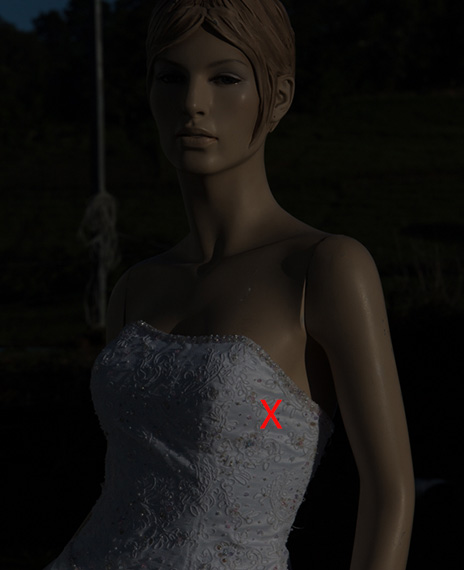
-1
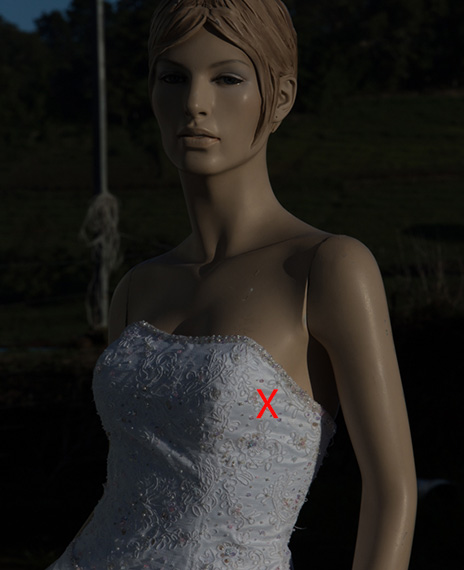
+0
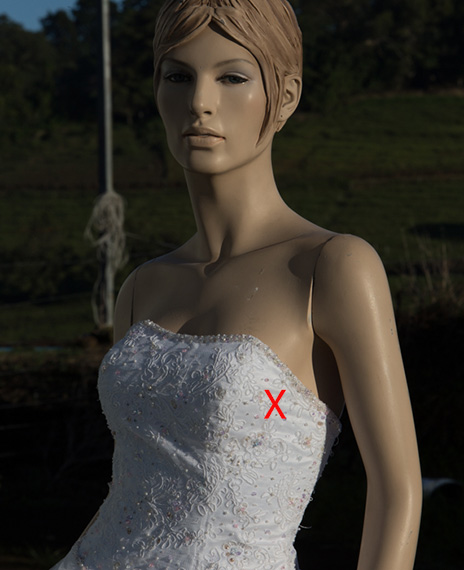
+1
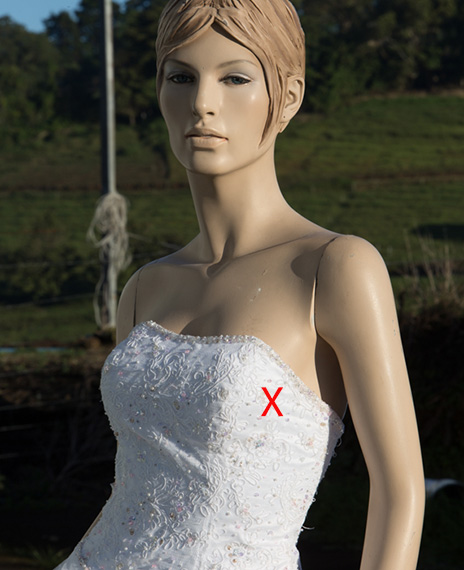
+2
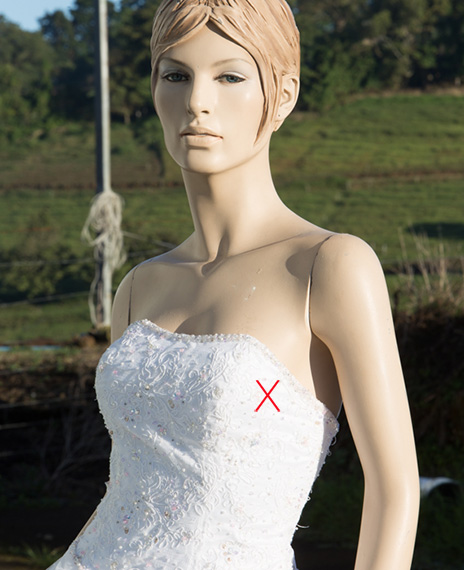
+3
Avoiding Loss of Detail in Highlights & Color Shifts
A solution is to meter the brightest area of the dress and adjust the shutter speed, aperture, or ISO, overexposing it by 1.5–2 stops (+1.5 – +2). This may vary from DSLR to DSLR and depends on the overall amount and intensity of light and ISO level. It’s a matter of familiarizing yourself with how your camera reacts in different lighting conditions. We have found that by overexposing this area until the camera’s highlight warning slightly blinks on the brightest area of the dress is an accurate and repeatable method of knowing how much to overexpose to prevent loss of detail and color shifts. This is very useful when working with flash. Knowing these limitations of your DSLR can help you take great photos of wedding dresses that keep the details and have color consistency.
Stylistic Choices
Sometimes, we purposely blow out the highlights in portraits of the bride, but it is not our style. It can be an interesting look, especially at the beach or in the country during the golden hour. It’s one thing to knowingly do this to take advantage of specific lighting conditions to get a specific look. It’s another to do it unknowingly, considering the emotional and financial investment brides make in their wedding dresses. Besides, wedding dresses can be gorgeous, detailed works of art. Why ruin such beauty?
About the Author
Originally from Florida, Andrés Sánchez is a wedding photographer in Costa Rica who runs Arenas Foto Wedding Photography with Lindsay Núñez, his colleague and wife. They shoot weddings, elopements, and engagements all over Costa Rica, from small intimate ceremonies to extravagant, large-scale, all-day weddings.
Like This Article?
Don't Miss The Next One!
Join over 100,000 photographers of all experience levels who receive our free photography tips and articles to stay current:
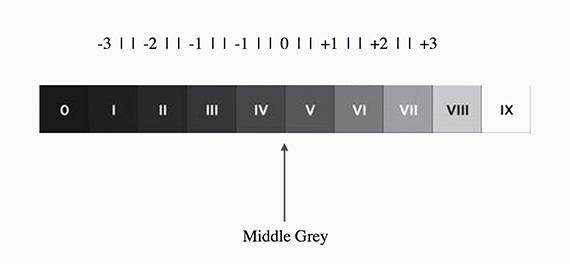






Thanks for sharing such an amazing blog. A photographer must know what their client’s expectations and demands are, they must prepare for any ceremony and party functions that will let them expose the talent they have been practicing. It is really helpful for the photographer to enhance their skills,